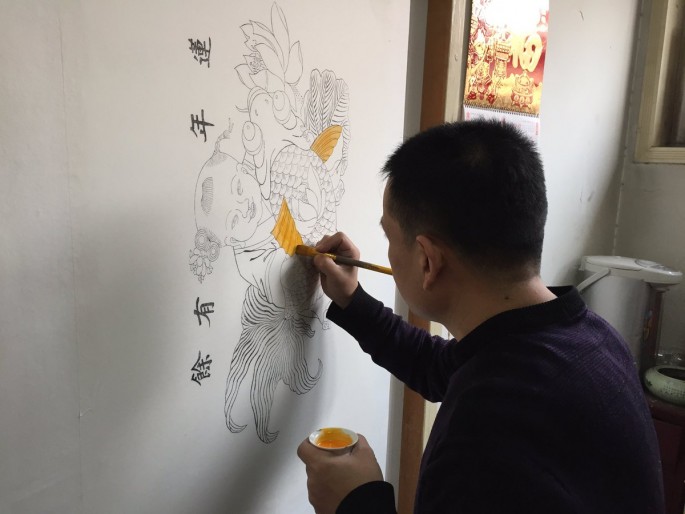Traditional woodprint paintings made especially for the Chinese New Year remain a valued art form and a helpful source of income for the locals of Tianjin, a port city in the northern part of the country.
Made primarily of wood, Tianjin's woodprint New Year paintings are the product of the hardwork of several families in the area, including that of Huo Shuqing, according to an article by Channel News Asia.
Huo's family has been making woodprint New Year paintings for seven generations, and the clan shows no signs of stopping the practice.
Woodprint New Year paintings undergo several steps, including drawing, woodcarving, making ink rubbings, and then coloring, until it is finally ready to be mounted.
In the process of making a woodprint New Year painting, Huo's expertise is solely focused on adding colors to the rubbings--an art he has been perfecting for about 25 years. According to Huo, painting the woodprint is the toughest part of the process.
"After all the preliminary work is done, after the wood is carved, it's fixed and you don't have to touch it. But colouring is different because there isn't a fixed format, there isn't a sample, so it's entirely based on your experience, which is why it's very difficult," Huo shared in an interview with Channel News Asia.
Huo is based in Yangliuqing, a small town in Tianjin. Yangliuqing has a tradition of making woodprint New Year paintings for over 600 years. Imperial families used to source their woodprint art from the town during the ancient times.
Today, Yangliuqing shares the seat with Taohuawu, another woodprint painting production hub, this time located in the eastern city of Suzhou. Woodprint New Year paints from both towns are distinct from each other.
The State Council listed Yangliuqing's woodprint paintings as an intangible cultural heritage back in 2006, much to the delight of purveyors and fans.



























